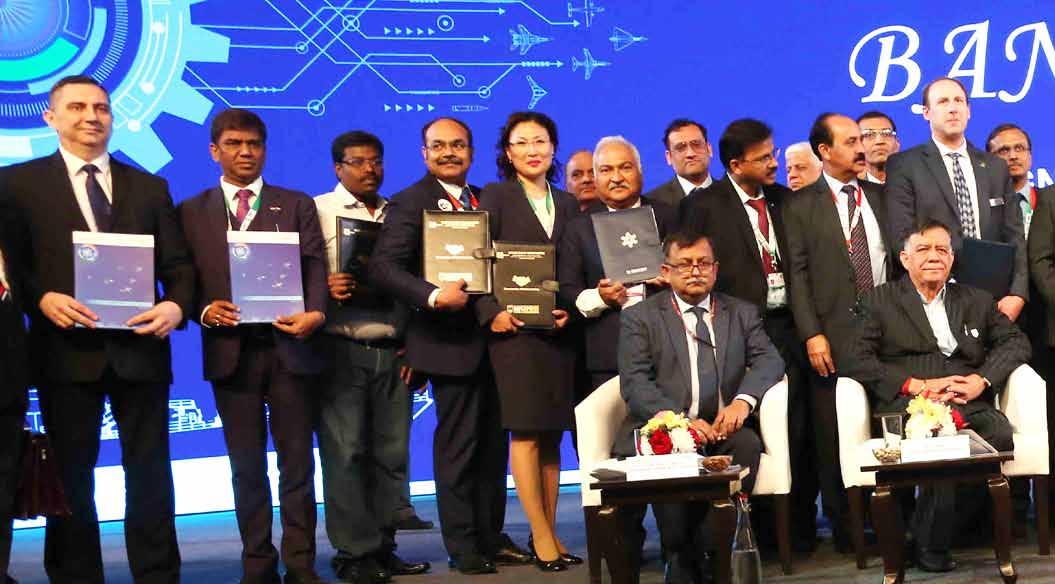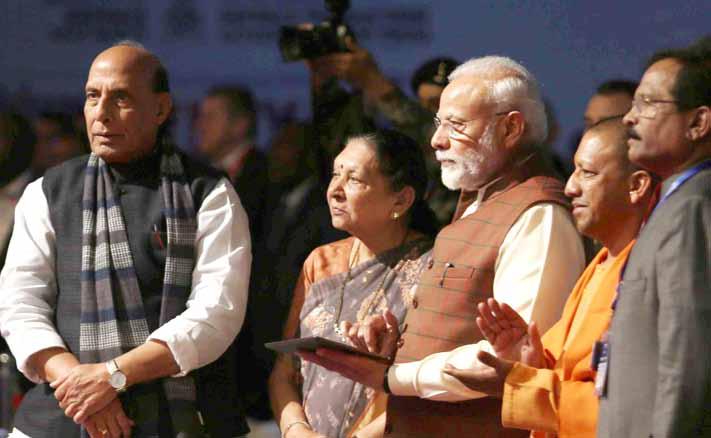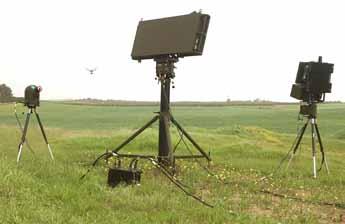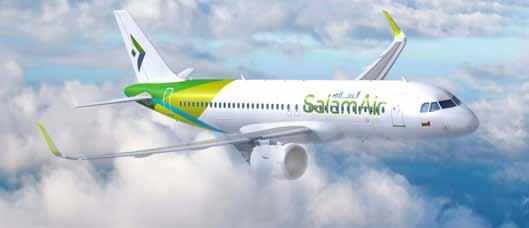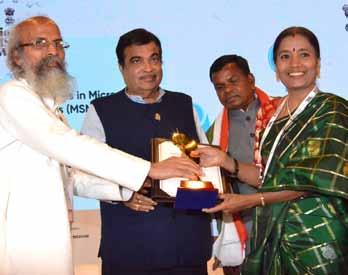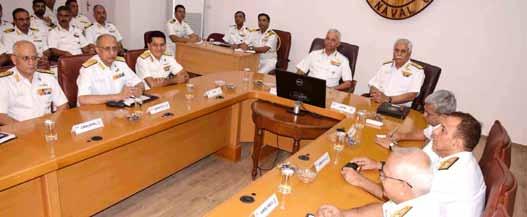
13 minute read
Indian civil aviation on the upswing
India’s civil aviation industry has witnessed plenty of action during recent years. Rise in passengers, new airports and novel government programmes have made India the third biggest civil aviation player in the world.
India is the third biggest and one among the fastest growing civil aviation markets in the world. To meet the demand of the rising air traffic, the Government of India is increasing the number of airports in the country. As per official data, India has 103 operational airports as of March 2019 and it is planned to raise this figure to 190- 200 by financial year 2040. The increase in passengers has also witnessed additions to the aircraft fleet. As of July 2018, around 620 aircraft were being operated by scheduled airline operators in India and number was expected to grow to 1,100 planes by 2027.
Advertisement
According to the Department of Industrial Policy and Promotion (DIPP), FDI inflows in India’s air transport sector reached US Dollars 1,904.37 million between April 2000 and June 2019. India’s aviation industry is expected to witness an investment of Rs 35,000 crore (US dollars 4.99 billion) in the next four years. The Indian government also has plans to invest US Dollars 1.83 billion for development of airport infrastructure along with aviation navigation services by 2026.
India’s aviation industry has witnessed a lot of action during the recent years. For instance, in December 2019, France-based Safran Group said it was considering an investment of US Dollar 150 million in a new aircraft engine maintenance, repair and overhaul (MRO) unit in India to cater to its airline customers. In November 2019, the Competition Commission of India (CCI) approved the acquisition of shareholdings in Mumbai International Airport Limited (MIAL) by Adani Properties Private Limited

(APPL). Meanwhile, the UK group said it will invest Rs 950 crore (US Dollars 135.9 million) in Turbo Aviation’s new airline TruStar. The Airports Authority of India (AAI) also said it would be investing Rs 15,000 crore (US Dollars 2.32 billion) for expanding existing terminals and constructing 15 new ones. Indian aircraft Manufacture, Repair and Overhaul (MRO) service providers were exempted completely from customs and countervailing duties.
The Government of India also introduced various measures to boost civil aviation in the country. According to the Union Budget 2019-20, the government will promote aircraft financing and leasing activities to make India’s aviation market self-reliant. In February 2019, the Government of India sanctioned the development of a new Greenfield airport in Hirasar, Gujarat, with an estimated investment of Rs 1,405 crore (US Dollars 194.73 million). In January 2019, the government organised the Global Aviation Summit in Mumbai which witnessed participation of over 1,200 delegates from 83 countries. The same month, the Government of India’s released the National Air Cargo Policy Outline 2019 which envisages


making Indian air cargo and logistics the most efficient, seamless and cost and time effective globally by the end of the next decade. Yet another significant step has been the launch of the Regional Connectivity Scheme (RCS). Under RCSUdan scheme, approximately 34,74,000 passengers were flown, and 335 routes awarded during the year 2019 covering 33 airports (20 unserved, 3 underserved and 10 water aerodromes). Marking a milestone, the number of Operational Airports crossed 100 in the financial year 2019. In September 2018 Pakyong Airport in Sikkim was inaugurated. It is Sikkim’s first ever airport and AAI’s first Greenfield airport construction. In December 2018, Kannur International Airport was inaugurated making Kerala the only state in India to have four Thrust from Govt. needed to make civil aviation sector soar I ndia boasts of the third biggest civil aviation sector in the world, but stakeholders face a host of issues. For instance, several private airlines, including two major operators, have grounded their entire fleet over the last few years.
Meanwhile, the Government of India has been launching a number of programmes to boost the sector. One such initiative which is aimed at expanding the air network is the Regional Connectivity Scheme (RCS-UDAN). Under the scheme, new airports are developed in rural and unserved areas of the country. As a result, the number of operational airports in India has crossed 100. The Government also released the National Civil Aviation Policy (NCAP) in 2016. Despite all these initiatives, problems still persist in the sector. Operating costs of the airlines have steadily gone up while taxation issues related to Maintenance, Repair and Overhaul (MRO) of aircraft are unaddressed. In fact, the MRO industry in the country is still in a nascent stage, despite the huge potential. Add to this the loss of jobs. This calls for urgent action not only from the aircraft operators but also the government. While operators have to introduce measures to reduce expenses, the government needs to introduce earnest and effective measures to solve the problems faced by the sector. Unless this is done, the civil aviation sector in India would continue to face turbulent weather, even as the number of passengers is steadily growing. international airports. Due to rise in demand in air travel, India will need 2,380 new commercial airplanes by 2038. Air India is India’s national flag carrier. It merged with Indian in 2011 and plays a major role in connecting India with the rest of the world. IndiGo, Air India, Spicejet, GoAir, Vistara and AirAsia India are the major carriers. These airlines connect more than 80 cities across India and also operate overseas routes after the liberalisation of Indian aviation. Several other foreign airlines connect Indian cities with other major cities across the globe. Meanwhile, the Mumbai–Delhi air corridor is ranked the world’s third-busiest route.
The beginning
Modern civil Aviation in India traces back to 18 February 1911, when the first commercial civil aviation flight took off from Allahabad for Naini over a distance of 6 miles (9.7 km). Incidentally, it was the world’s first official airmail service. On October 15, 1932, J.R.D. Tata flew a consignment of mail from Karachi to Juhu Airport. His airline later became Air India. In March 1953, the Indian Parliament passed the Air Corporations Act. India’s airline industry was nationalised and the eight domestic airlines operating independently at that time – Deccan Airways, Airways India, Bharat Airways, Himalayan Aviation, Kalinga Airlines, Indian National Airways, Air India and Air Services of India – were merged into two governmentowned entities. Indian Airlines focused on domestic routes and Air India International on international services. The International Airports Authority of India (IAAI) was constituted in 1972 while the National Airports Authority
was constituted in 1986. The Bureau of Civil Aviation Security was established in 1987 following the crash of Air India Flight 182.
East-West Airlines was the first national-level private airline to operate in the country after the government de-regularised the civil aviation sector in 1991. The government allowed private airlines to operate charter and non-scheduled services under the ‘Air Taxi’ Scheme until 1994. That year, the Air Corporation Act was repealed and private airlines could now operate scheduled services.
More than half a dozen lowcost carriers entered the Indian market in 2004–05. But Indian aviation industry struggled due to economic slowdown, rising fuel and operation costs. This led to consolidation, takeovers and discontinuations.
To increase the number of operational airports, number of operational airports with scheduled flights, number of routes, number of flyers and to reduce the cost of flying, the Government of India launched UDANRCS scheme from 2016. With a view to aid in modernization of the existing airports to establish a high standard and help ease the pressure on the existing airports, 100% FDI under automatic route has now been allowed in Brownfield Airport projects.
Vision 2040
The Ministry of Civil Aviation released a report titled ‘Vision 2040’ on January 15, 2019 outlining a roadmap for the future of civil aviation in India. The report projects that air passenger traffic will increase sixfold to 1.1 billion by 2040 including 821 million domestic and 303 million international passengers. The report estimates that a total of 2,359 aircraft would be required to serve passengers in March 2040. The government expects air cargo movement to quadruple to 17 million tonnes in 2040. The Ministry projected that the number of airports in India would rise from 101 in January 2019 to around 190–200 by March 2040 and an estimated 150,000 acres of land and US Dollars 40–50 billion of capital would be required for construction. The government proposed creating a US Dollars 2 billion fund to help support low-traffic airports. The report also targets establishing an aircraft manufacturing base in India by 2040.
National Civil Aviation Policy 2016
The Government of India released the National Civil Aviation Policy (NCAP) on June 16, 2016. The NCAP 2016 covers the broad policy areas, such as Regional connectivity, Safety, Air is at Kochi. Indira Gandhi International Airport at Delhi is a ‘carbon neutral’ airport. New constructions in some of the airports such as Chandigarh and Vadodara have adopted green building features. Pradeep Singh Kharola Civil Aviation Secretary
Government agencies
The Ministry of Civil Aviation (MoCA) of Government of India is the nodal Ministry

and carriage of passengers and goods by air. The Ministry also administers implementation of the 1934 Aircraft Act. The ministry controls aviation-related autonomous organisations like the Airports Authority of India (AAI), Bureau of Civil Aviation Security (BCAS), Indira Gandhi Rashtriya Uran Akademi and public sector
Transport Operations, 5/20 Requirement for International Operations, Bilateral traffic rights, Fiscal Support, Maintenance, Repair and Overhaul, Air-cargo, Aeronautical ‘Make in India’.
Saving the environment The world’s first airport fully powered by solar energy responsible for the formulation of national policies and programmes for development and regulation of civilian aviation, and for devising and implementing schemes for the smooth growth and expansion of civilian air transport. Its functions extend to overseeing airport facilities, air traffic services

undertakings including Air India, Pawan Hans Helicopters Limited and Hindustan Aeronautics Limited.
Meanwhile, the Directorate General of Civil Aviation (DGCA) is the national regulatory body for civil aviation under the Ministry of Civil Aviation. This directorate investigates aviation accidents
and incidents. In order to give a fillip to infrastructure, several Integrated aviation-industrial parks, for aerospace training, research, manufacturing, Maintenance, repair, and operations (MRO) and Fixed-base Operations (FBO) integrated international aviation hub and aerospace industrial hub, are in the process of being set up, such as in Hisar and Gujarat.
While there are 346 civilian airfields in India – 253 with paved runways and 93 with unpaved runways, only 132 were classified as ‘airports’. Of these, the airports in Delhi, Mumbai, Chennai, Bangalore, Kolkata, Hyderabad, Kochi, Ahmedabad, Jaipur and Pune

handle most of the traffic. The operations of the major airports in India have been privatised over the past five years and this has resulted in better equipped and cleaner airports. India also has 33 ‘ghost airports,’ which were built in an effort to make air travel more accessible for those in remote regions but are now non-operational due to a lack of demand. There are 45 Helicopters in India. India also has the world’s highest helipad at the Siachen Glacier a height of 6400 metres above mean sea level. Pawan Hans Helicopters Limited is a public sector company that provides helicopter services to ONGC to

its off-shore locations, and also to various State Governments in India, particularly in North-east India.
AAI was formed on April 1, 1995 by merging the International Airports Authority of India and the National Airports Authority with a view to accelerate the integrated development, expansion, and modernization of the operational, terminal and cargo facilities at the airports in the country conforming to international standards. Rajiv Gandhi National Aviation University is India’s first National Aviation University established under Act of Parliament in 2013. The University campus is fully operational at Fursatganj Airfield under the direct administrative control Ministry of Civil Aviation. Meanwhile, AAI is implementing the GAGAN project in technological collaboration with the Indian Space Research Organization (ISRO), where the satellitebased system will be used for navigation. The navigation signals thus received from the GPS will be augmented to meet the navigational requirements of aircraft.
MRO
The Indian Maintenance, Repair and Overhaul (MRO) industry is estimated to be
worth USD 1.5 billion. However, currently India constitutes only one per cent of the global MRO market. The Indian government’s measures for an open sky policy, increase in military, civil and business aircraft fleet in the country, the growing preference for air travel by India’s middle class, and the focus by industry to optimise cost of aircraft operations, provides a strong foundation for the Indian MRO industry to strengthen its capability to meet global standards of excellence. Setting up an MRO is highly capital intensive with a long break-even time. Operating a credible MRO is highly dependent on investing in the right manpower which is regularly trained and optimally utilised with a strong focus on quality and turnaround time. It also requires continuous investment in tooling, certification from safety regulators such as the Federal Aviation Administration (FAA) and the European Aviation Safety Agency (EASA) and global OEMs such as Airbus, Bell Helicopter, Boeing, Bombardier Aerospace, Dassault Aviation, Gulfstream Aerospace, Honeywell and others, in addition to certification from the local regulator. Airlines in India spend about 13–15 per cent of their revenues towards maintenance, the secondhighest cost item for airlines after fuel. India has only one fully operational independent third-party provider MRO, Air Works, with an EASAcertified facility in Hosur, near Bengaluru. Air Works provides heavy maintenance capability for Airbus A320, ATR 42/72 and Boeing 737/NG family of aircraft. GMR has set up in partnership with MAS an operational facility meeting EASA standards at Hyderabad. Earlier, in the absence of quality infrastructure, airlines carried out maintenance


outside India at the nearest available MRO location (South East Asia, Middle East or Europe) incurring a ferry flight, logistics costs and engine and component hours. A significant percentage of the business aviation fleet in India gets heavy maintenance and modifications done at OEM approved facilities in Europe, UK and the US. Another challenge which is faced by the industry is non-availability of spare parts in the region which leads to frequent grounding of aircraft for lack of spares. Defence MRO in India is largely captive with the Army, Navy and Air Force supported to an extent by HAL (Hindustan Aeronautics Limited). The revised Defence Procurement Procedure (DPP) outlines key changes which provides establishment of public private partnerships as well as qualification of MRO under offset guidelines.
Challenges
One of the biggest challenges faced by civil aviation is air safety. In the past few years, there have been a number of fatal accidents. Many of these accidents could have been avoided if as the planners, managers and regulators had a better understanding of the dynamics of the man-machine interface. The next most important issue is one of finance.








